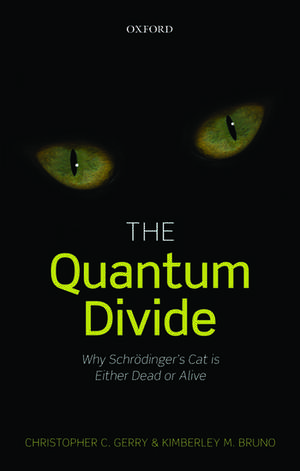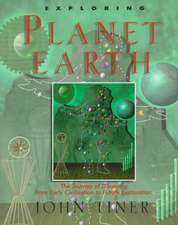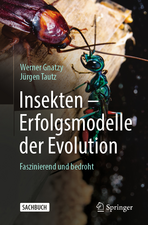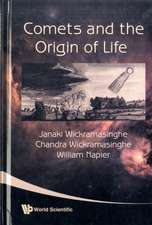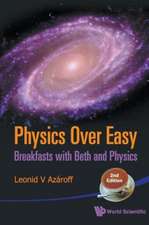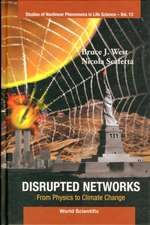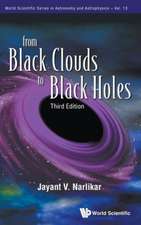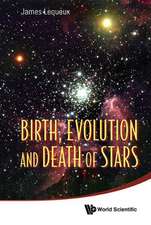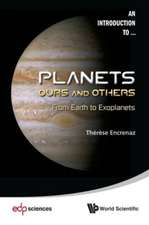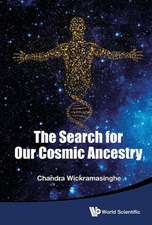The Quantum Divide: Why Schrödinger's Cat is Either Dead or Alive
Autor Christopher C. Gerry, Kimberley M. Brunoen Limba Engleză Paperback – 3 mar 2016
| Toate formatele și edițiile | Preț | Express |
|---|---|---|
| Paperback (1) | 148.65 lei 11-16 zile | |
| OUP OXFORD – 3 mar 2016 | 148.65 lei 11-16 zile | |
| Hardback (1) | 369.42 lei 32-37 zile | |
| OUP OXFORD – 20 feb 2013 | 369.42 lei 32-37 zile |
Preț: 148.65 lei
Preț vechi: 180.84 lei
-18% Nou
Puncte Express: 223
Preț estimativ în valută:
28.44€ • 29.86$ • 23.61£
28.44€ • 29.86$ • 23.61£
Carte disponibilă
Livrare economică 10-15 martie
Preluare comenzi: 021 569.72.76
Specificații
ISBN-13: 9780198754077
ISBN-10: 0198754078
Pagini: 197
Ilustrații: 62 b/w illustrations
Dimensiuni: 138 x 216 x 12 mm
Greutate: 0.27 kg
Editura: OUP OXFORD
Colecția OUP Oxford
Locul publicării:Oxford, United Kingdom
ISBN-10: 0198754078
Pagini: 197
Ilustrații: 62 b/w illustrations
Dimensiuni: 138 x 216 x 12 mm
Greutate: 0.27 kg
Editura: OUP OXFORD
Colecția OUP Oxford
Locul publicării:Oxford, United Kingdom
Recenzii
... the agreeable style and exceptional clarity of the writing makes this book a great pleasure to read ... the value of the book is above all in its comprehensible accounts of some very important and subtle experimental work, accompanied by excellent diagrammatic illustrations of the relevant apparatus. I have not encountered a better exposition of these, and can heartily recommend the book on this basis.
An instructive and entertaining read - an excellent example of what 'popular science for scientists' should be. [...] It gives a balanced and up-to-date account of fascinating quantum phenomena well beyond the double-slit experiment and Schrödinger's cat paradox. It also advocates a more relaxed approach. Quantum mechanics is weird, but not that weird.
The burgeoning fields of quantum computing, information processing and simulation develop rapidly as a consequence of theoretical insight and technological developments. The latter have enabled us to take single atoms or ions and count single photons, and many of the thought experiments discussed in earlier treatments of quantum physics have now been conducted in laboratories. This lucid account by Gerry and Bruno presents a mature discussion of the link between the microscopic quantum and the macroscopic classical worlds and will be useful for professional physicists, students and the educated layman.
Gerry and Bruno succeed in introducing the quantum world in a readable but not oversimplified way. Their engaging and original account will particularly satisfy those who find popular texts on quantum mechanics lacking in technical detail. The Quantum Divide will leave readers understanding Feynman's quote with its original intent - not as an admission of defeat but as an invitation to the fascinating world of quantum physics.
Highly recommended.
To understand quantum information is to understand the mathematics describing it; without the mathematics you can have only the haziest picture of what the field is all about. In The Quantum Divide, Christopher Gerry, a theoretical physicist, and Kimberley Bruno, a school teacher and vice principal, have done an impressive job in cutting the necessary mathematics down to the absolute minimum, below what I previously thought was possible... An unusual feature of The Quantum Divide is that the authors do not content themselves with theory but always describe relatively simple experiments that demonstrate the expected behaviour.
An instructive and entertaining read - an excellent example of what 'popular science for scientists' should be. [...] It gives a balanced and up-to-date account of fascinating quantum phenomena well beyond the double-slit experiment and Schrödinger's cat paradox. It also advocates a more relaxed approach. Quantum mechanics is weird, but not that weird.
The burgeoning fields of quantum computing, information processing and simulation develop rapidly as a consequence of theoretical insight and technological developments. The latter have enabled us to take single atoms or ions and count single photons, and many of the thought experiments discussed in earlier treatments of quantum physics have now been conducted in laboratories. This lucid account by Gerry and Bruno presents a mature discussion of the link between the microscopic quantum and the macroscopic classical worlds and will be useful for professional physicists, students and the educated layman.
Gerry and Bruno succeed in introducing the quantum world in a readable but not oversimplified way. Their engaging and original account will particularly satisfy those who find popular texts on quantum mechanics lacking in technical detail. The Quantum Divide will leave readers understanding Feynman's quote with its original intent - not as an admission of defeat but as an invitation to the fascinating world of quantum physics.
Highly recommended.
To understand quantum information is to understand the mathematics describing it; without the mathematics you can have only the haziest picture of what the field is all about. In The Quantum Divide, Christopher Gerry, a theoretical physicist, and Kimberley Bruno, a school teacher and vice principal, have done an impressive job in cutting the necessary mathematics down to the absolute minimum, below what I previously thought was possible... An unusual feature of The Quantum Divide is that the authors do not content themselves with theory but always describe relatively simple experiments that demonstrate the expected behaviour.
Notă biografică
Christopher Gerry is Professor of Physics at Lehman College, The City University of New York, where his areas of research include theoretical quantum optics, quantum information theory, quantum metrology and sensing, and group theoretical methods in quantum optics and quantum theory in general. Kimberley Bruno is Vice Principal of Williamsburg High School for Architecture and Design, Brooklyn, New York.
